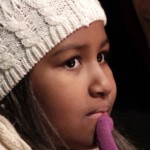National Chinese Language Conference
 I am very excited to announce that PAASSC will be presenting at the 5th annual National Chinese Language Conference. This year’s conference will take place in Washington DC from April 12 – 14, 2012. I had no idea what an amazing event this would be and I can’t stop beaming as I am so excited that PAASSC will be participating in such an amazing conference.
I am very excited to announce that PAASSC will be presenting at the 5th annual National Chinese Language Conference. This year’s conference will take place in Washington DC from April 12 – 14, 2012. I had no idea what an amazing event this would be and I can’t stop beaming as I am so excited that PAASSC will be participating in such an amazing conference.
They already have confirmed 60 expert-led sessions with additional less formal sessions that will also take place. I can’t stop saying how excited I am about this conference. The focus of the conference is examining the State of the Field: Proficiency, Sustainability and Beyond. Topics include Engaging Learners through Meaningful Play; Innovative Classroom Management Techniques; Structuring Emotion Filled Chinese Learning Experiences; Integrating Chinese Language into Math Curriculum; and my favorite Urban Elementary Mandarin: A Triangulated Design for Successful Implementation and Sustainability.
I had no idea! These are the concerns that most African American parents have raised – limited opportunities for movement in the classroom, more creative and supportive forms of discipline and/or classroom management, and just the prospects of having a discussion at this conference about children in urban communities has me pretty excited. I have to be honest. I am also very excited to have the pleasure of meeting Dr. Roger Harris.
 Dr. Harris is a 37-year veteran of public schools in Boston and the 2001 Massachusetts Principal of the Year and recipient of the 2001 U.S. Department of Education’s National Distinguished Principal Award. He is the Head of School at Boston Renaissance. Boston Renaissance is a PreK-6 elementary charter and full-service school that coordinates an array of programs to attack the root causes of academic failure and create an integrated approach to learning – similar to the “Harlem Children’s Zone”. The school recently introduced a Mandarin Chinese Language and Culture program. To get right to the point the students at Boston Renaissance have eliminated the Achievement Gap and that is the story all of us need to hear more about. In 2010, 71% of the third graders scored “Advanced” or “Proficient” in English language compared with just 45% in 2006. In math, 73% were “Advanced” or “Proficient” compared with just 36% in 2006. Renaissance’s student population is 96% African-American and Latino. More than three-quarters of its students come from low-income families, and more than 20% come from families whose first language is not English. In addition to the incredible academic strides the school has made, their choir was invited to sing before the President and First Lady this past December. These children have so much to be proud of and I can’t wait to take notes during his presentation.
Dr. Harris is a 37-year veteran of public schools in Boston and the 2001 Massachusetts Principal of the Year and recipient of the 2001 U.S. Department of Education’s National Distinguished Principal Award. He is the Head of School at Boston Renaissance. Boston Renaissance is a PreK-6 elementary charter and full-service school that coordinates an array of programs to attack the root causes of academic failure and create an integrated approach to learning – similar to the “Harlem Children’s Zone”. The school recently introduced a Mandarin Chinese Language and Culture program. To get right to the point the students at Boston Renaissance have eliminated the Achievement Gap and that is the story all of us need to hear more about. In 2010, 71% of the third graders scored “Advanced” or “Proficient” in English language compared with just 45% in 2006. In math, 73% were “Advanced” or “Proficient” compared with just 36% in 2006. Renaissance’s student population is 96% African-American and Latino. More than three-quarters of its students come from low-income families, and more than 20% come from families whose first language is not English. In addition to the incredible academic strides the school has made, their choir was invited to sing before the President and First Lady this past December. These children have so much to be proud of and I can’t wait to take notes during his presentation.
Stay tuned for more information regarding the upcoming conference. Early bird registration has been extended to February 15th so sign up now if you are going.








